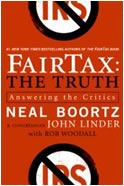The Gun Self Defense Counter
Web Widget - Get it - Share it
John Gaver
June 2, 2009
 After many requests from our readers (and a lot of procrastination, on my part), ActionAmerica.org has released a web version of our very popular Macintosh Dashboard widget, the Gun Self-Defense Counter, in Flash format. Actually, to make up for the delay, this web version adds a little more data than is currently available on the Dashboard version.
After many requests from our readers (and a lot of procrastination, on my part), ActionAmerica.org has released a web version of our very popular Macintosh Dashboard widget, the Gun Self-Defense Counter, in Flash format. Actually, to make up for the delay, this web version adds a little more data than is currently available on the Dashboard version.
The Gun Self-Defense Counter web widget not only counts the number of times that guns have been used in self defense, since the beginning of the year, but for comparison, it also counts accidental gun deaths, gun homicides and gun suicides. Then, to place all of those numbers into perspective, it counts the number of times that people have died from falling, poisoning, suffocation and traffic accidents, since the first of the year.
This leads to some interesting findings. For example, guns are used roughly 60 times more often to protect and innocent life, than to take a life (innocent or otherwise). Another fact that it exposes is that you are more likely to die from falling (20,823), than from a gun homicide (12,791) and accidental gun-shot wounds (642) combined.
ActionAmerica.org encourages you to share this widget with your friends, by placing it on your web site, in the signature of your forum postings and on your MySpace page and other social networking sites.
Note for Mac users: Some Mac users who are using Mavericks may at first think that the widget is not working. That's because, as a way to preserve battery life (and possibly to drive developers away from Flash and toward HTML5), under Mavericks, Apple now puts Flash and other plugins to sleep, by default. This means that unless you have changed the default, as have I, you will have to roll over the widget and click on the icon that appears, in order to awaken flash, before the widget will begin to tick. However, since Mac battery life is so much longer than their PC counterparts to begin with, I chose to turn that feature off in the Safari Preferences Advanced Tab. You can also specify which sites will turn on plugins automatically.
To share this widget with others, just select all of the text in the following box and copy it (Ctrl–C on a PC or Cmd–C on a Mac). Then, paste it into the HTML code of your web site, blog or forum posting (Ctrl–V on a PC or Cmd–V on a Mac), where you want the Gun Self-Defense Counter to appear on that page. That's all there is to it. Note that some blogs and forums may not allow "object" code, so we have also included the less used "embed" code version, for you to try, if the "object" code does not work.
Object Code (Copy into your blog or forum)
Alternate Embed Code (Copy into your blog or forum)
The data used to generate the numbers that you see on the face of the widget comes from two very reliable sources. The death rate data comes from the Centers for Disease Control, National Center for Injury Prevention and Control for 2006; the federal agency tasked with collecting and compiling such data. The gun self-defense data comes from a report in the The Journal of Criminal Law and Criminology, Northwestern University School of Law, (Fall 1995) titled, "Armed Resistance to Crime: The Prevalence and Nature of Self-Defense With a Gun," by renowned criminologists Gary Kleck & Marc Gertz.
While we have never had anyone question the numbers from the CDC death data, we have often had gun control advocates, who were not familiar with the unimpeachable quality of the Klek/Gertz study, try to dismiss the numbers from that study. So, before going any further, I would like to point out several things, concerning that study.
One of the most telling facts, regarding that study, is that prior to undertaking that study, one of the authors, Gary Kleck, began his career as an opponent of private gun ownership and had published several works to that end. But after doing his own research, he reversed his position, to one favoring gun ownership.
In fact, there are numerous published criminologists who have, like Kleck, changed their position over the years, to support gun ownership, after having spent a good part of their careers writing in favor of gun control. There are no such changes in the other direction. This leads us to conclude that the more a criminologist learns about gun usage, the more he is likely to oppose any form of gun control and support private gun ownership.
Furthermore, to show just how solid Kleck's research really was, I would like to direct you to criminologist Marvin E. Wolfgang, who has researched guns and violence for more than 25 years. Wolfgang is one of the country's most outspoken opponents of private gun ownership. But after reading the Kleck/Gertz study, he praised the methodology that was used by Kleck and Gertz, in a paper titled "A Tribute to a View I Have Opposed," (archive link) published in the Journal of Criminal Law and Criminology, vol. 86, Issue 1 (Fall 1995), p. 188.
In that article, Wolfgang begins by saying:
"I am as strong a gun-control advocate as can be found among the criminologists in this country. If I were Mustapha Mond of Brave New World, I would eliminate all guns from the civilian population and maybe even from the police."
Those are certainly not the views of your ordinary anti-gun type. This is a man who represents the ultimate in anti-gun philosophy. But to his credit as a researcher, he was not so proud that he would deny the excellent methodology employed by Kleck and Gertz. He went on to say:
"What troubles me is the article by Gary Kleck and Marc Gertz. The reason I am troubled is that they have provided an almost clear-cut case of methodologically sound research in support of something I have theoretically opposed for years, namely, the use of a gun in defense against a criminal perpetrator... I have to admit my admiration for the care and caution expressed in this article and this research."
Wolfgang concludes by saying:
"The Kleck and Gertz study impresses me for the caution the authors exercise and the elaborate nuances they examine methodologically. I do not like their conclusions that having a gun can be useful, but I cannot fault their methodology. They have tried earnestly to meet all objections in advance and have done exceedingly well."
Principal among the facts that Wolfgang was disappointed to learn, is that Guns are used for self-defense between 2.1 Million and 2.5 Million times every year. The following facts from the Kleck/Gertz study, relate directly to this fact.
-
In the vast majority of those self-defense cases, the citizen will only brandish the gun or fire a warning shot.
-
In less than 8% of those self-defense cases will the citizen will even wound his attacker.
-
Over 1.9 million of those self-defense cases involve handguns.
-
As many as 500,000 of those self-defense cases occur away from home.
-
Almost 10% of those self-defense cases are women defending themselves against sexual assault or abuse.
-
This means that guns are used 60 times more often to protect the lives of law-abiding citizens than to take a life.
-
At an estimated 263 million US population, in 1995, when the study was released, it also means that an average of 1 out of every 105 to 125 people that you know will use a gun for self-defense every year.
Dr. Kleck also wrote in his book titled "Point Blank: Guns and Violence in America (Social Institutions and Social Change)" that burglars are more than three and a half times more likely to enter an occupied home in a gun control country than in the USA. Compare the 45% average rate of Great Britain, Canada and Netherlands with the 12.7% of the USA.
He continued to point out that armed citizens shoot and kill at least twice as many criminals every year as do police (1,527 to 606). In a related article titled, "Are We a Nation of Cowards'?" in the November 15, 1993 issue of Newsweek Magazine, George Will reported that police are more than 5 times more likely than a civilian to shoot an innocent person by mistake.
This is not an indictment of the police. They often live on the edge and they deal with an element of society that has no compunction against killing anyone, even a policeman, who gets in their way. Their training teaches them that if they hesitate, that may be the last thing that they ever do, whereas a civilian, will hesitate, by nature, before shooting and that hesitation is probably what makes the difference.
While I honor the brave policemen, who all too often, have to make such snap decisions, if a gun is pointed at me, I would much rather it be my cautious civilian neighbor, who is pointing the gun, than a policeman, who lives on the edge.
But, as the infomercials say, "But, wait; there's more." The Wall Street Journal reported, in an August 28, 1996 article titled, "More Guns, Less Violent Crime," (archived here) that a University of Chicago study revealed that states which passed concealed carry laws reduced their murder rate by 8.5%, rapes by 5%, aggravated assaults by 7% and robbery by 3%. The most impressive single statement in the University of Chicago Study, which is an ongoing study, is the very first sentence of the Abstract on the first page.
"Using cross-sectional time series data for U.S. counties from 1977 to 1992, we find that allowing citizens to carry concealed weapons deters violent crimes, without increasing accidental deaths." - University of Chicago Study (1st line of Abstract) |
That deserves repeating. Concealed carry deters violent crime, without increasing accidental deaths. But, it doesn't stop there.
In fact, the data keeps piling up in favor of private gun ownership. Even when anti-gun presidents hand-pick anti-gun researchers, to help them prove that guns in the hands of private citizens are bad, the truth still comes out.
A 1979 Carter Justice Department study found that of more than 32,000 attempted rapes, 32% were actually committed. That number dropped to only 3% when the woman was armed. (The term, "armed," in this case, included women armed with either a gun or knife - mace was not included. However, other studies show that the vast majority of armed women, choose a gun as their armament of choice. Visit a-human-right.com for more on women and guns.) All of this means that an unarmed woman is more than 10 times more likely to be raped than an armed woman. Think about it...
Even when the Clinton Justice Department hand picked noted anti-gun criminologists Philip Cook and Jens Ludwig, to conduct a study on "Guns in America," in 1997, to undermine the Kleck study, these researchers couldn't hide the truth. Keep in mind that these were people who were already well known for their anti-gun positions and whose pay check was being signed by the Clinton Justice Department, yet the lowest that they could get the number of defensive gun uses was still more than 1.5 million times a year.
The difference is the Cook/Ludwig numbers and the Kleck/Gertz numbers is likely related to the fact that the Kleck/Gertz researchers identified themselves to respondents, as independent researchers, with Northwestern University and that the respondents' answers would remain anonymous, while the Cook/Ludwig researchers identified themselves to respondents, as being tied to the US Justice Department, even showing identification that included a badge, in personal interviews and took down all contact imformation of every adult in the household, before comencing the survey.
Do the anti-self-defense types not see a disconnect here?
Think about it. A lot of people just don't want to admit to any agent of the government that they carry a gun or have used a gun, especially if they live in a state or city that restricts your right to self-defense, with a gun. By identifying themselves as government agents, the Cook/Ludwig study hoped to insert a tremendous bias against admitting the use of a gun in self-defense. Even so, the lowest they could get the number of defensive gun uses was 1.5 million.
That obvious bias, is just one reason why we use the Kleck/Gertz numbers in the widget.
Then compare those numbers with the various other causes of gun-related death. In 2006 (the last year for which the data is available), there were only 642 accidental gun deaths, 12,791 gun homicides and 16,883 gun suicides. None of those numbers are anywhere close to significant, when compared to the 1.5 to 2.5 million defensive gun uses each year that is supported by the various studies by both pro-gun and anti-gun researchers.
By contrast, in 2006, there were 20,823 deaths caused by falls and 27,531 accidental poisoning deaths (not including 6,109 poisoning suicides). In fact, an interesting figure that is lumped into a larger category in the recent data, but was tracked separately in 1998, is deaths from falling objects.
Using slightly older data from The National Safety Council Report, "What are the odds of dying" (2005) (the NSC link to this data was broken in 2010, so we'll post an archive link as soon as we can find one), we can get a more granular look at some of the specific causes of death. For example, you are more than twice as likely to die from falling down stairs than from an accidental gun-shot. So, why don't we hear calls to ban stairs and force everyone to use elevators. Oh, yes. I know. It's because another 533 people died from falling out of windows and down elevator shafts. So maybe we should ban multi-story buildings. But, another 607 people drowned in swimming pools. Oops. I guess we need to ban swimming pools, too. But then, 1603 people drowned in natural water. Since that's more than double the accidental gun deaths, I suppose that we should fence off all access to oceans, rivers and lakes.
But, here's the tough one. More people die from choking on food every year, than die from an accidental gun-shot. We can't ban eating. But, maybe the government can mandate that all food be in the form of baby food, so as to prevent choking accidents.
But, if you go back to the 1998 version of that National Safety Council Report, when the data was even more granular than today, you will find that there were 723 people killed by falling objects. That number is just shy of the number of accidental gun deaths in the same year. Maybe we should all go out and buy pith helmets to wear all of our waking hours. Is a picture beginning to develop here?
Of course, we haven't even considered deaths caused by transportation accidents, which totaled 48,441 deaths, in 2005.
To put these numbers into even better perspective, in 2006, the total of all injury deaths in the USA was 179,065. Of that number, 121,599 were accidental. Of all accidental deaths, accidental gun deaths totaled only 642 or about one-half of one percent (0.5%) of all accidental injury deaths. Maybe the people who are so worried about the very few accidental gun deaths should worry about more significant causes of accidental deaths, such as the 2,172 deaths from "the adverse affects of medical care" (such as patients getting the wrong treatment, surgical misadventures or even malpractice).
Be it accidental deaths or homicides, the statistics clearly show that guns save many more lives than are taken by use of a gun.
For the record, the Gun Self-Defense Counter widget uses the Kleck/Gertz numbers, since the Kleck/Gertz findings are not as likely to be biased, as those of researchers whose study was being underwritten by an anti-gun administration and who identified themselves as being related to a government agency, before asking any questions.
Furthermore, we must not forget that prior to commencing their study, Gary Kleck was a noted opponent of private gun ownership. So, if his study was to be biased in any way, it would have been biased toward lower self-defense numbers. Plus, the fact that Kleck's own findings in this study, caused him to change his position on gun ownership, indicates an honesty of purpose that is seldom seen in such research.
To learn more about the real facts surrounding gun usage, on both sides of the issue, we suggest that you spend some time browsing the links on GunCite.com. In fact, that site shoots down myths about guns and gun control, on both sides, as they strive to provide just the facts.
We encourage you to embed the Gun Self-Defense Counter web-widget, wherever you post information to the internet. The more people know of the real facts surrounding gun usage, the less likely that we will lose our right to protect ourselves.
Copyright 2009
ActionAmerica.org









